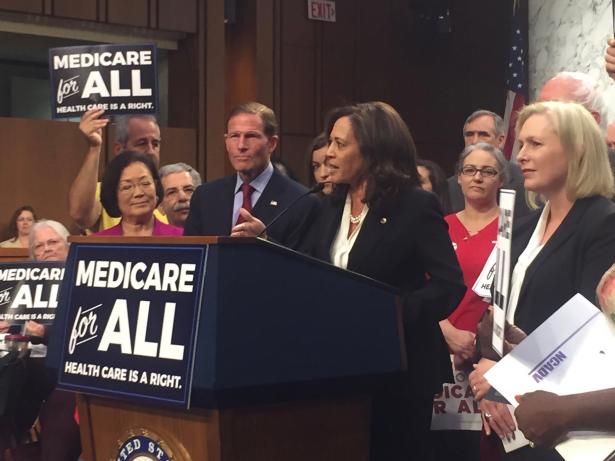President Biden’s ambitious program to fix American health care will succeed only if health care costs are brought under control. This can only be done with Medicare, which has a scale and simplicity that allow the administrative efficiency and market power needed to control costs.
There are two parts to Biden’s roadmap for health care: building on the Affordable Care Act by increasing the subsidies for private health insurance and expanding Medicare.
While both approaches will increase access, only Medicare has the proven ability to control costs. Since 2008, private health insurance costs per enrollee have risen almost twice as fast as Medicare by 51 percent — compared to 26 percent per enrollee for Medicare. Inpatient hospital services for private health insurance now cost nearly twice as much as Medicare, outpatient services are more than twice as expensive and physician services are 43 percent more costly.
Add to this administrative costs for private health insurance that are ten times higher than Medicare and Medicare can easily insure the nation at a cost that’s more than 30 percent cheaper than private health insurance. Indeed, by age 64, private health insurance premiums on ACA exchanges on average cost more than $13,000 per year, or over double the per capita spending for Medicare at age 65.
To make health care affordable, we should move people into Medicare because every person who moves from private health insurance to Medicare lowers our national health care bill.
Biden proposes to move millions onto Medicare. Unfortunately, he would also expand the inefficient and overpriced private health insurance system. He would build on the ACA by expanding subsidies for people to buy insurance on the private exchanges. ACA subsidies have allowed millions of low and middle income households to buy private health insurance. Biden would increase these subsidies and extend them to households with incomes over four times the federal poverty line.
While this would encourage more to buy health insurance, by using expensive private health insurance this program would ultimately raise our national health expenditures. The inefficiency of the private health insurance system and its inability to restrain monopoly pricing by elite hospitals and drug companies is the source of rising health care costs and would ultimately undermine our health care system. This has been the Achilles’ heel bedeviling the ACA. The high cost of private health insurance has meant that too many of the insurance plans offered on the exchanges have such high deductibles and other forms of cost sharing that they restrict the care that the insured can afford.
We have evaluated the cost and the potential effect on health insurance enrollment Biden’s proposals to expand access to Medicare and increase ACA subsidies might have. This analysis demonstrates how public health insurance can increase enrollment at a dramatically lower cost than using private health insurance. It also shows that the public side of Biden’s plan increases enrollment five times as much as increasing private insurance subsidies through the ACA, extending coverage to nearly 12 million more people compared with 2 million more for the ACA expansion.
The cost to the federal government is greater for the larger Medicare enrollment. But the real cost to our country for increasing ACA subsidies is the effect on national health expenditures and subsidizing private health insurance increases by nearly $5 billion — while the Medicare program lowers expenditures by at least $25 billion. Actual savings may be even greater because this assumes only a 30 percent cost advantage for Medicare.
Medicare’s efficiency would allow Biden to expand access to health care while restraining spending. By utilizing the cost efficiency of traditional Medicare, he could square the circle that has stymied health care reform for decades.
Now it is time to act, to save money and to save lives.
Gerald Friedman is a professor of Economics at University of Massachusetts at Amherst. Travis Campbell is a graduate student in Economics at University of Massachusetts at Amherst.


Spread the word